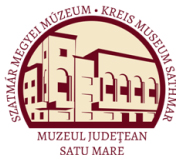Marta, Liviu: The Late Bronze Age Settlements of Petea-Csengersima (Satu Mare, 2009)
V. Conclusions. Contribution of the Petea-Csengersima Excavations to the Knowledge of the Late Bronze Age
As it was seen, the sites of Oarţa de Jos - Vâlceau Rusului, Bicaz — Igoaie (the north of Transylvania), Diakovo and Kvasovo (Ukraine) have a more developed pottery. Here excision plays a more important role than at Culciu Mic and Boineşti, other elements of form and ornamentation specific of the late Suciu de Sus phase also find their place among the types encountered at Petea—Csengersima and Culciu Mare. Through this they differ from the pottery of the settlements at Petea—Csengersima and Culciu Mare (attributed to the phase Suciu lib), where early elements are absent or have an insignificant quantitative meaning. Till the analysis of greater pottery assemblages from the Suciu Ha phase it is difficult to know with certainty what is the chronological value of the vessel types and variants or of the numerous ornaments that are absent from the repertory of this phase, but are present in great numbers in the Suciu lib phase. The lack of more published pottery assemblages Suciu de Sus Ila leaves uncertain the separation of the two sub-phases. This is one of the reasons why it is considered necessary to operate with two sub-phases and not with two phases (Ila and lib and not II and III). It also needs to be kept in mind that it is improbable that certain pottery types or ornaments appear to facilitate the observation of a moment strongly and clearly expressed within the evolution of the Suciu de Sus II phase. This is due to the fact that the transformations and incorporations within the pottery seem to take place slowly, elements of older tradition surviving alongside newly adopted elements or invented ones. The existence of sub-phases during the Suciu II phase (Kacsó) was posited by C. Kacsó based on the presence of bronzes specific of different deposit types, though it was considered that there are still no certain elements to date the different setdements of the Suciu culture695. The materials discovered at Petea—Csengersima still attest the existence of a pottery assemblage with specific, unitary character, with elements that separates it from the pottery of other sites, confirming the clues offered by the different dates of the bronze finds that appear within the Suciu de Sus Ila and lib phases. Concerning the association with bronze finds, the setdements of the Suciu de Sus Ha phase can be linked with finds of the types present in the deposits from Koszider (in Boineşti, Culciu Mic and Kvasovo)696 but also with other bronze finds with a longer existence, however these end up being present also in Uriu-Opályi type deposits (the Cypriot needles from Bicaz and Oarţa de Jos697). On the other hand the finds from the Suciu lib phase are linked with bronze finds that are also part of the Uriu—Ópályi type deposits. In order to associate the Suciu Ila phase with neighbouring cultural evolutions, the presence of its pottery in the settlement at Cehăluţ (early) from Pişcolt or its contact with Wietenberg IV type elements observable in the northern areas of Transylvania are significant698. Considering these elements, but also the long existence of some Koszider type finds (especially the adornments discussed here) the narrow dating of the beginning of the Suciu II phase to the end of the BzBl stage is uncertain699. However the date of the Suciu Ila phase generally corresponds to the BzB2 phase and at least with one part of the BzC phase. The end of the Suciu Ila phase is linked with the “moment” when the Uriu—Ópályi type deposits occurred and to which the following phase is in a close relation. The wide date of the beginning of the Uriu-Ópályi type deposits700 and the fact that the beginning of the Suciu II phase is the result of a process (and not a “moment”) leaves an extended transition period between phases Ila and lib, within the Bz C phase or at the beginning of the Bz D phase. The Suciu Ila phase corresponds to the Late 695 Kacsó 1987, p. 74 (faza „Ila” şi „Hb”); Kacsó 2005, p. 53. 696 Bader 1978, p. 75; Kacsó 1987, p. 68; Kobal' 2007, p. 492-993. 697 Kacsó 2004, p. 339, fig. 7/15; Kacsó 2005, p. 52-53. 698 Boroffka 1994a, taf. 56/1,7 (Ciceu-Corabia), 99/12 (Nicula); Gogältan-Cocis—Paki 1992, p. 12; Gogältan 2001, p. 194; Bejinariu 2003, p. 71. 699 Kacsó 1987, p.74. 7°° por tpe cliscusion concerning a wider date of the Uriu-Opályi type deposits see: Gumă 1993, p. 262; Kacsó 1996, p. 238-239; Kacsó 1990a, p. 46; Kobal' 2000, p. 17-19; Gogältan 2001, p. 196. 97
